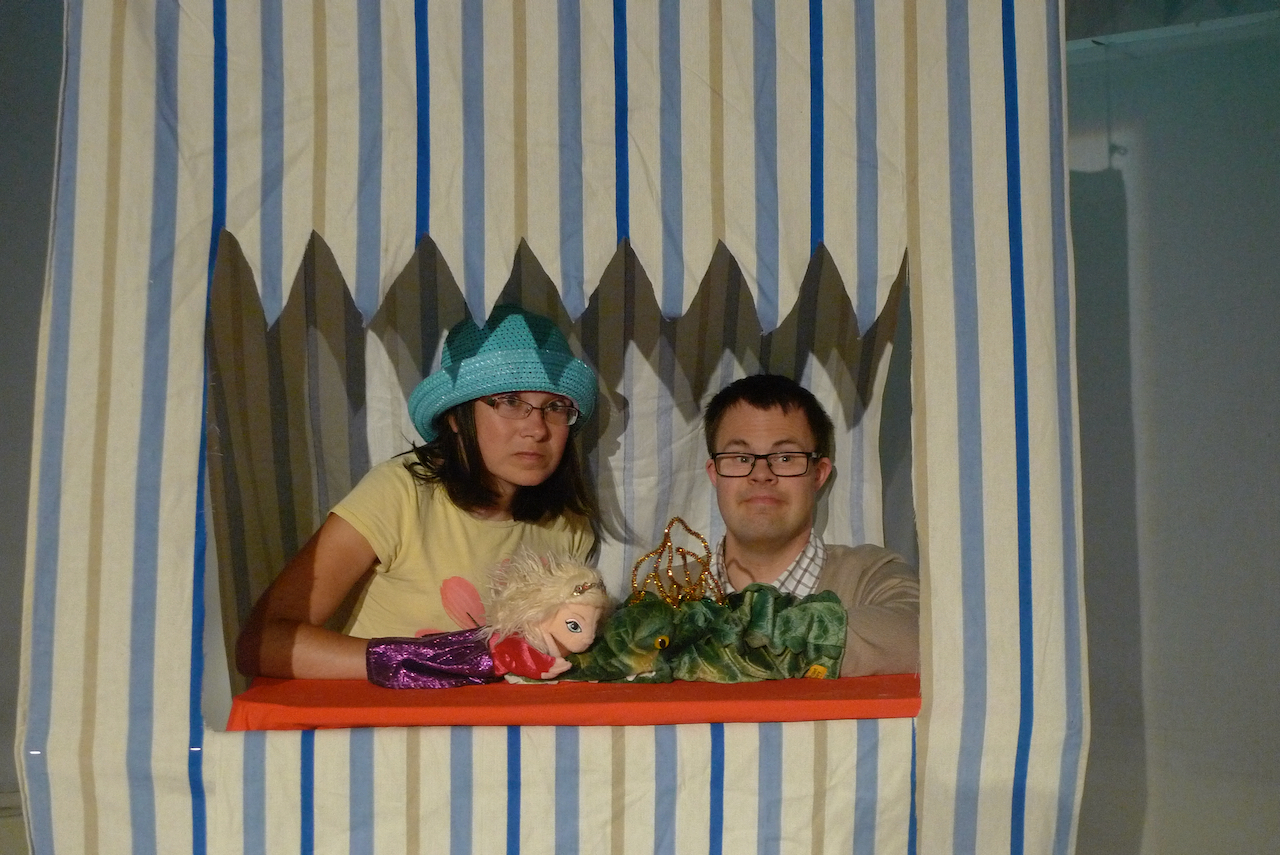Beach
The
exploration of a beach can be a wonderful multisensory experience, inspiring
the use of a variety of props and instruments depending on the kind of beach you decide to create. Children’s play sand is preferable as it doesn't stain hands,
feet or clothing. It is also useful to have wheeled plastic trolleys for
transportation and wheelie bins for storage. These can often be sourced from
the local council. To create a beach first lay down a cloth which will help
retain the sand (or stones)



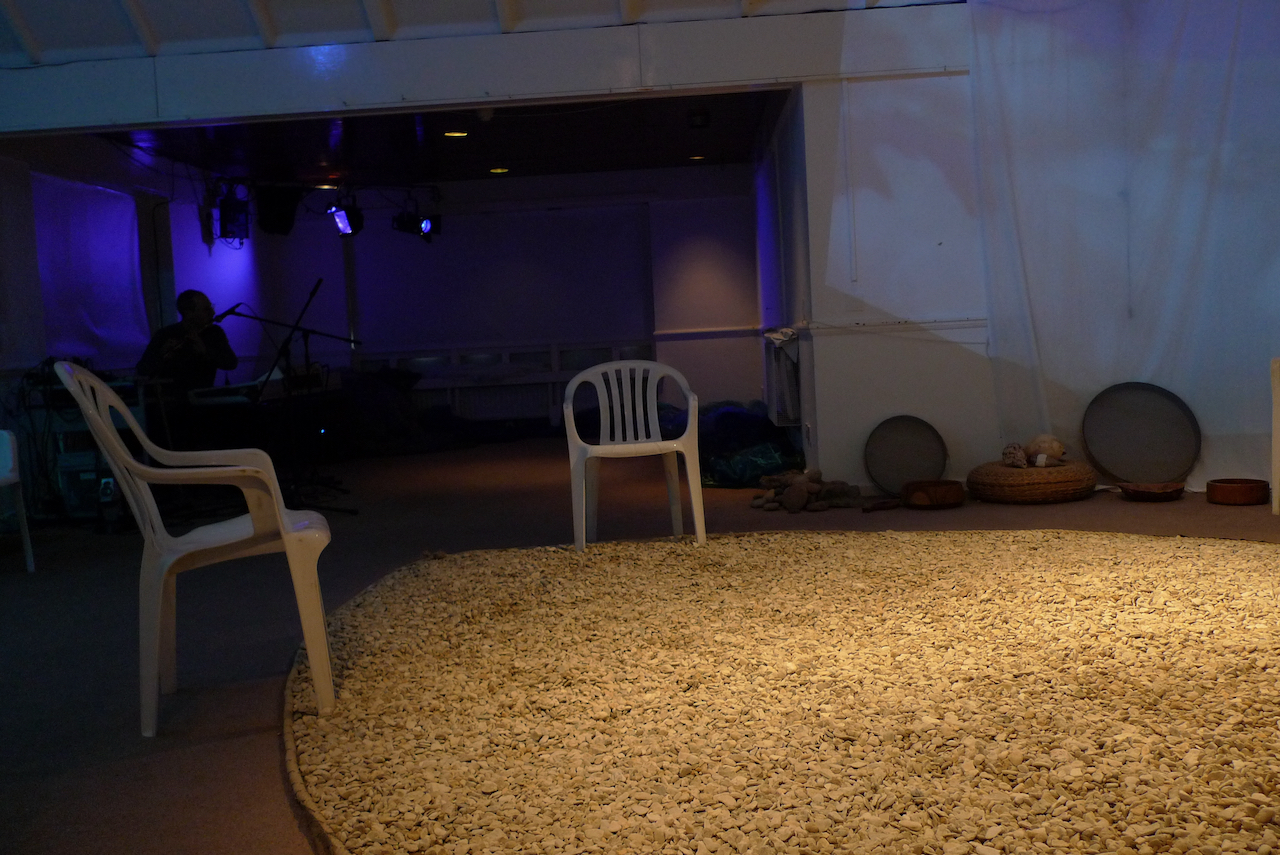
A simple list of props would compliment the above: a variety of different coloured/shaped shells and pebbles to create patterns, trays, acrylic mirrors, sieves, baskets,
colanders to inspire different ways of using the sand. Add basket shakers, cabasas, ocean drums and
tambours to make complimentary sounds Use blue voiles and white organzas for waves. The sound effects of waves on shingle and seagulls
will enhance the overall effect.




Consider the setting - an English
seaside with fun fair, beach toys, sound effects and ice cream sellers
Projections can enhance the setting


.....or a Hawaiian beach with leis and grass skirts.
Grass skirts provide a great multisensory resource in themselves. Chesil Beach is a stoney alternative

Listen to the sounds of the sea all around
you, play with the sand, feel it trickle through
your fingers and bury your fingers and toes. Walk barefoot on the beach making footprints
and patterns, feeling the sand between your toes. Roll on the soft sand.
Paint patterns with water on mirrors then
sprinkle sand over to reveal them. Gather shells and make patterns on
sand/mirrors. Play shell throwing and dropping games.
Pour and sieve sand into different containers
- hear the different sounds sand makes.


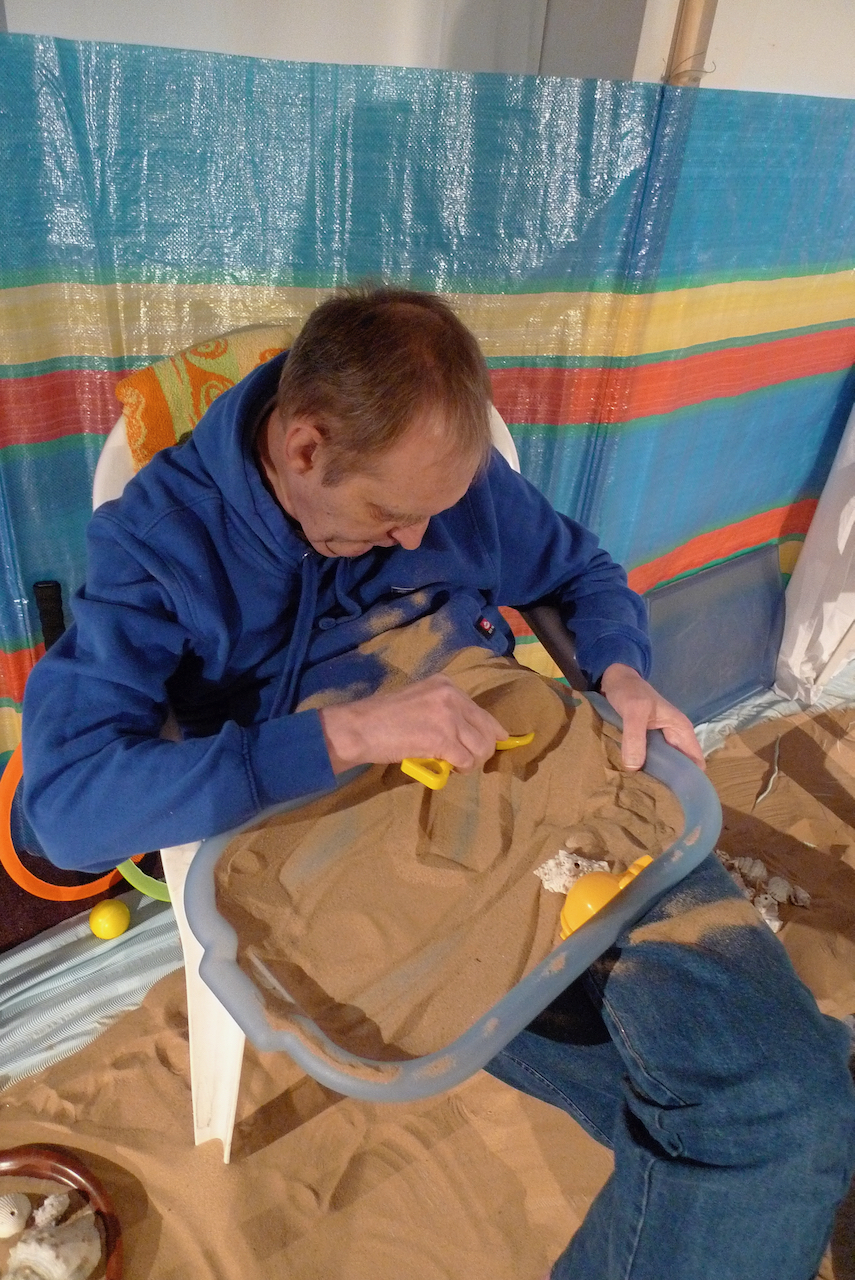

Enjoy the tactile qualities of sand, both wet and dry, on laps or underfoot
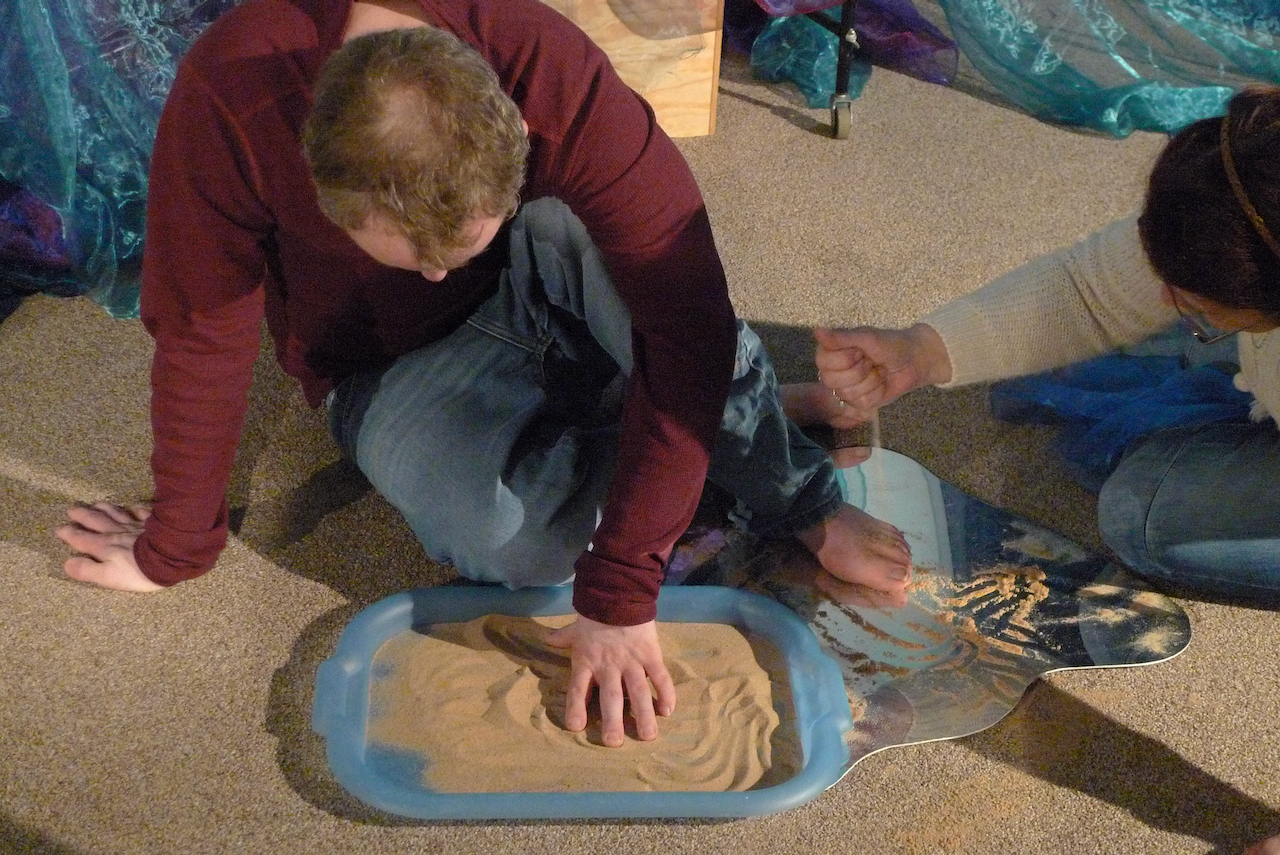
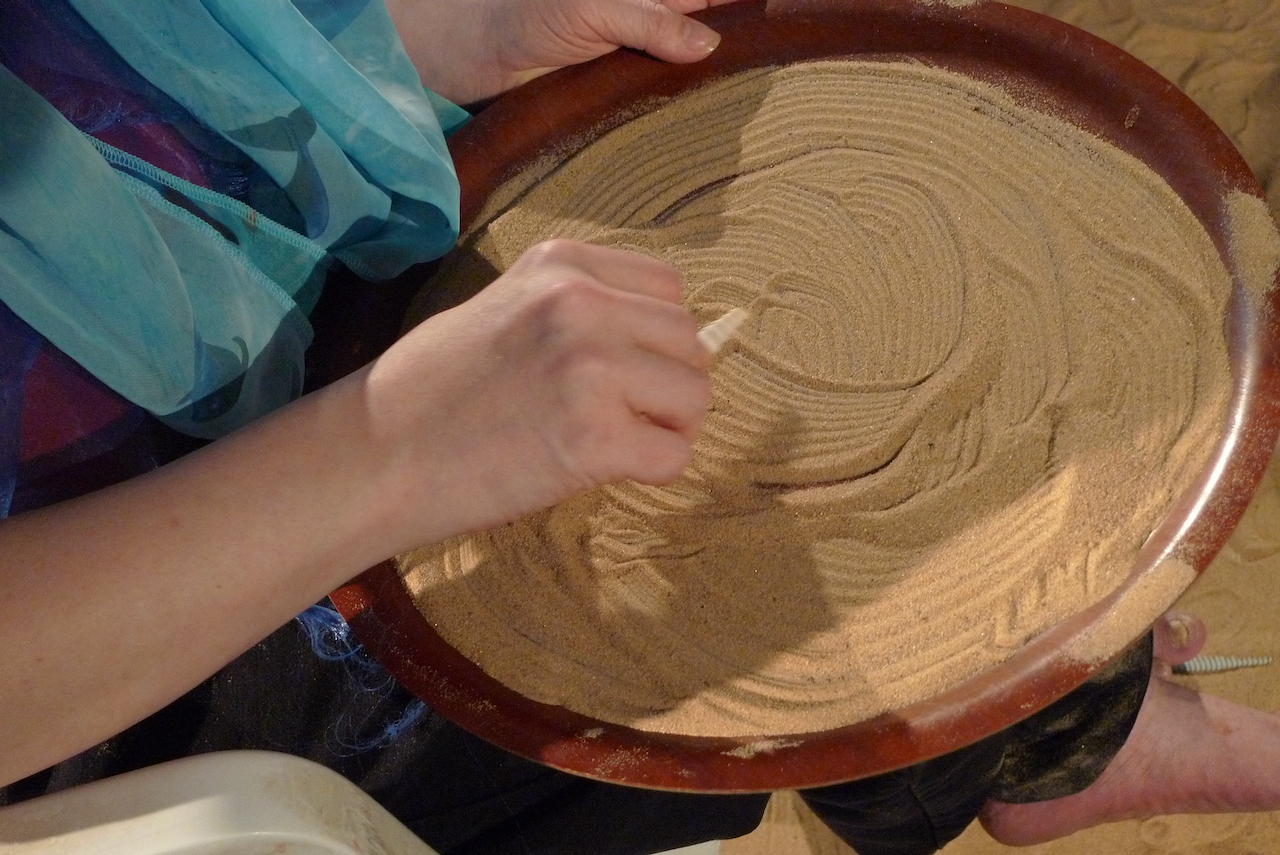


Or just have fun in a beach like setting



